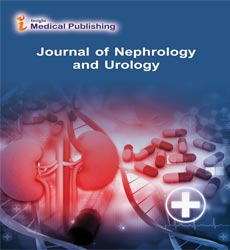Autosomal Dominant Adult Polycystic Kidney Disease
Abstract
Autosomal dominant polycystic kidney disease (ADPKD) is a genetic disorder characterized by the growth of numerous cysts in the kidneys. Symptoms vary in severity and age of onset, but usually develop between the ages of 30 and 40. ADPKD is a progressive disease and symptoms tend to get worse over time. The most common symptoms are kidney cysts, pain in the back and the sides and headaches. Other symptoms include liver and pancreatic cysts, urinary tract infections, abnormal heart valves, high blood pressure, kidney stones, and brain aneurysms. ADPKD is most often caused by changes in the PKD1 and PKD2 genes, and less often by changes in the GANAB and DNAJB11 genes.It is inherited in a dominant pattern.The diagnosis of ADPKD should be suspected in patients with clinical features mentioned and in those with a family history of ADPKD. Preferred method — Mayo classification system, which categorizes patients into five prognostic classes from the lowest to the highest risk for disease progression (classes 1A, 1B, 1C, 1D, and 1E). The Mayo classification requires demographic data such as the patient's age, height, and TKV. The TKV can be calculated using a TKV calculator available online using a single representative coronal image . Treatment for ADPKD involves managing the symptoms and slowing disease progression. The most serious complication of ADPKD is kidney disease and kidney failure. ADPKD is the most common inherited disorder of the kidneys. Tolvaptan is a vasopressin V2-receptor (V2R) antagonist with proven beneficial results in ADPKD.
Open Access Journals
- Aquaculture & Veterinary Science
- Chemistry & Chemical Sciences
- Clinical Sciences
- Engineering
- General Science
- Genetics & Molecular Biology
- Health Care & Nursing
- Immunology & Microbiology
- Materials Science
- Mathematics & Physics
- Medical Sciences
- Neurology & Psychiatry
- Oncology & Cancer Science
- Pharmaceutical Sciences
